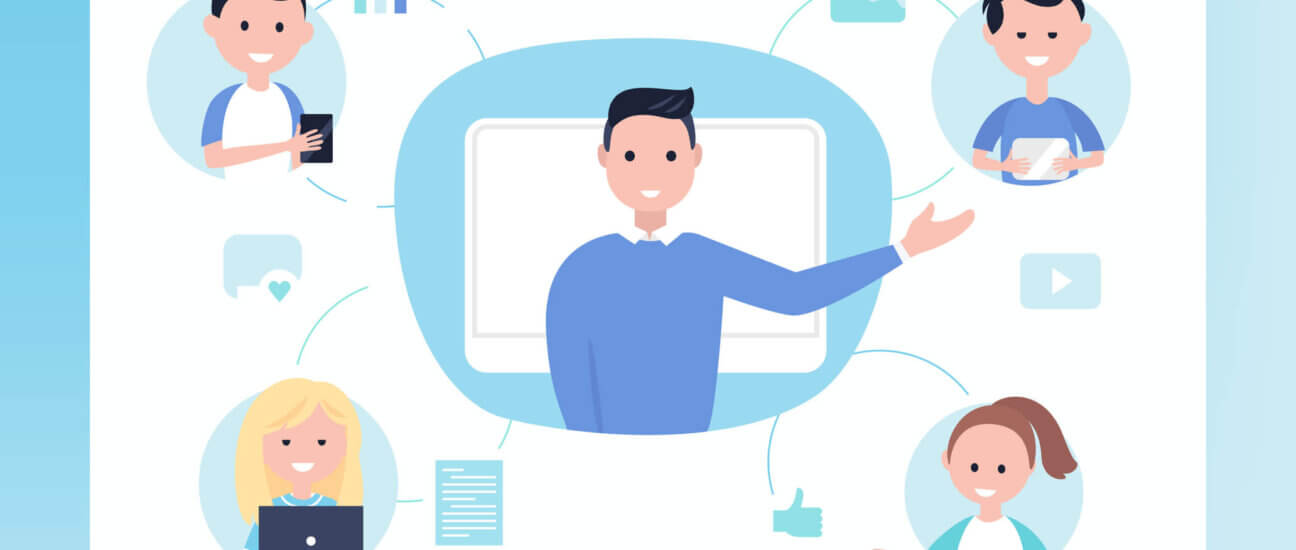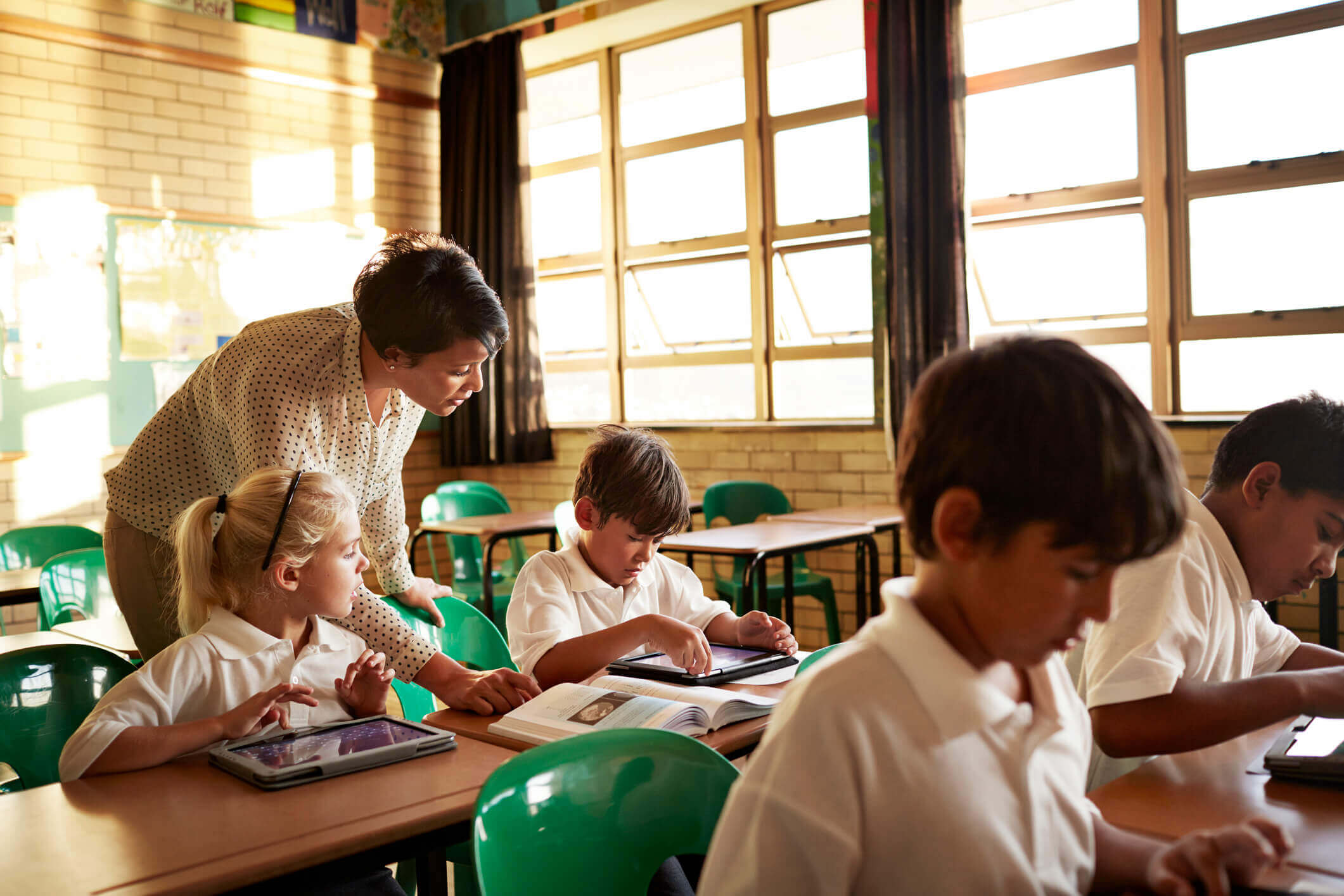Published on October 17th, 2022
14 Ways Of Enhancing Student Engagement Using The Flipped Classroom
15 minute read

Have you heard about the flipped classroom? Are you a teacher trying to change things up in the classroom to improve student engagement?
The flipped classroom is a pedagogical model that goes against traditional teaching methods and promotes learner-centred instruction through innovative classroom activities.
A questionnaire by Accomb in 2017 sound that students’ perceptions of the flipped classroom are often positive and approving and that this flipped learning strategy has resulted in increased student satisfaction.
With the flipped classroom model being incorporated into more and more educational institutions, it is important for teachers to learn how to use various class activities to encourage students to engage with learning materials and other students.
In this blog, we’ll talk you through the flipped classroom model in more detail, discuss how it stacks up against the traditional classroom, how it can improve student learning, and much more.
What is the flipped classroom model?
The flipped classroom model is a teaching method that switches homework with lectures.
Students read, watch, or listen to lecture material at home before attending class. When they’re in class, the teacher engages the students in active learning strategies which assist them in interacting with the materials and applying them to real-life situations.
A flipped classroom offers a more inclusive learning process that can benefit both neurotypical and neurodivergent learners, as well as students with learning disabilities.
It also evens the playing field for learners from different backgrounds, as they get more engagement and input during class activities than they might when completing tasks at home.
However, it isn’t necessarily practical for students from less privileged backgrounds or with difficult family circumstances: flipped learning often requires access to technology that might not be accessible to everyone.
How does the flipped classroom differ from the traditional classroom?
We know all about traditional classroom learning already, so what does the flipped classroom involve?
In the flipped classroom, the teacher creates video lectures for the students to watch at home, at their own pace, and in their own time. The lessons must be watched or read before the next day’s class for the children to benefit from the day’s activities.
After a quick check-in and a short review or recap of the lecture, class time is spent engaging with active learning activities, such as case studies, creating pro-con grids, debates, round table discussions, peer reviews, and think-pair-share activities.
With the flipped classroom approach, teachers can engage with students on a one-on-one basis to assist them with their specific struggles, which positively impacts student performance.
This innovative teaching approach positively influences student learning by interacting more with the learning materials and developing a deeper understanding of the subject matter. It also encourages engagement from all students, not only the confident students.
Instead of practising at home, practice occurs in class with assistance from peers and teachers. It often utilises active learning strategies rather than standard worksheets and textbook questions, as with the traditional classroom.
The video lectures can be referred back to and watched multiple times at the student’s own pace. If a student doesn’t catch everything the first time that they watch the lecture, they can easily watch it again.
This results in fewer students being left behind as the class progresses through the work. Through careful observation and regular check-ins, the teacher can know which students need more assistance and address any shortfalls early on.
The benefits of a flipped classroom
- The teacher has more one-on-one time with students.
- Students struggling with a subject are more likely to get the necessary input to grasp it fully.
- Students absorb more information by following the lectures at their own pace.
- Previous lectures can be referenced easily, and students will have the option to rewatch them as needed.
- Students learn how to engage in self-directed learning.
- It caters to both neurotypical and neurodivergent students.
14 ways of enhancing student engagement using the flipped classroom model
1. Self-paced lectures
Flipping the classroom allows students to work through the lecture material at their own pace, taking breaks as needed. While lectures do need to be watched by a certain deadline, they are not confined to 30 minutes or an hour of straight concentration, which can help to combat learning fatigue.
This results in better memory retention of the subject matter and positively impacts student learning by preventing students from missing important content if they lose concentration or need to step away for a moment.
2. Active learning strategies
Teachers are given the opportunity to make the subject matter more fun through the use of active learning activities. Learners can engage with the subject material in a more interactive and exciting way, resulting in deeper learning and improved academic performance.
Examples of active learning tools that are used in the flipped classroom approach:
- Post-it parade
The teacher poses a question or statement. Students respond with answers or ideas written on post-it notes. These notes are stuck onto a wall, and similar answers or ideas are grouped together or assigned into different categories. - Debates
Students take a stand (either for or against) on a topic chosen by their peers or teacher and discuss it with a peer with an opposing view. - Think-pair-share
The teacher poses a question or gives a statement. Students think about it individually, discuss it with a peer, and then share the outcome with the class. - Pro-con grids
A list of advantages and disadvantages is created about an issue or idea related to the lesson topic. - Ques-cussion
Used to discuss complex or controversial texts or topics, this game involves students having a discussion using only questions. If a student makes a statement, they need to rephrase it as a question before the game can continue. - One minute paper
This exercise can help teachers to gauge how well their students have grasped a topic. The teacher gives their students one minute to answer a question about the learned topic.
3. Discussions with peers about the subject
Incorporating active learning into classroom activities allows teachers to promote collaborative learning and encourage student engagement with each other and the subject.
This can be achieved by having class debates, using the think-pair-share learning tool, and engaging students in other interactive learning assignments. Peer reviews are also a great way to encourage student interaction and teach students the art of constructive criticism.
4. Assisting peers with their work
Individual work is also encouraged in the flipped classroom approach. There are times when taught skills need to be practised through repetition before being used in an active learning setting.
During this time, students can assist each other when they need help understanding a problem, which will benefit both the person needing help and the helper.
5. One-on-one interaction with the teacher
The flipped classroom method gives teachers more time to interact with and encourage their students.
When students have the opportunity to engage with their teachers on a one-on-one basis, they are able to get advice and clarification on parts of the lecture that they didn’t fully understand.
The one-on-one student-teacher interaction fostered in the flipped classroom can result in students having greater success with learning outcomes and has a significant impact on student performance.
6. Give struggling students more attention
Teachers using the flipped classroom model have a lot more time to interact with their students and give valuable assistance to struggling students.
The flipped classroom also encourages teachers to check in more frequently with each student and ensure that they are coping with the work and managing to view the lectures and notes at home. If there is a problem, teachers become aware of them faster and can implement early intervention strategies in good time.
7. Encourage self-directed learning
A key benefit of the flipped classroom model is that it encourages students to engage in self-directed learning, which is an important skill to master.
8. Promote deeper learning
The flipped classroom encourages students to actively engage with the learning materials by incorporating collaborative learning. This encourages discussion and the development of original thought and new ideas.
9. Implement a routine
Implementing a daily routine in the flipped classroom works well for students of all ages. Both children and adults thrive off routine, and knowing what to expect day-to-day can prepare the mind for learning.
While the tasks and activities themselves can differ, having a regular, timed routine can make it easier to plan active learning projects, and ensures that there is time for everything that needs to be incorporated into the lesson.
10. Provide a weekly schedule
Providing your class with a weekly learning schedule allows them to plan their time well and assists them with self-directed learning. For school-aged learners, sending the weekly schedule to the parents can improve student performance by creating an additional accountability system.
11. Daily check-ins
Adding a daily check-in into the flipped classroom routine will allow teachers to ensure that all students have done the lecture homework and find out if they need more input on a particular part of the lesson.
If students have not managed to get through the lecture, the daily check-in allows you to give them time to catch up, which means that they will still benefit from the rest of the lesson.
12. Include extension activities for students who complete work early
Some students always complete their work more quickly than the rest of the class. To prevent boredom, include fun extension activities that will give the learners more practice without feeling like more work or punishment.
13. Attend neurodiversity training workshops
Attending neurodiversity training is a critical element of being able to reach all your students and encouraging all students to engage with the lecture material.
With an estimated 15-20% of the population exhibiting some level of neurodivergence, you’re very likely to experience neurodiversity in the classroom.
Learner-centred instruction already provides a better learning environment for neurodivergent learners. Still, it’s important for their teachers to have an understanding of their learning differences. This increases the chances of enhancing student engagement using the flipped classroom.
14. Incorporate educational technology into the classrooms
Using various types of educational technology in a flipped learning classroom can improve a student’s engagement with the learning materials. It also ensures that all students can access the materials and makes it possible for missed lectures to be caught up in the classroom.
Incorporating technology into the learning setting creates a safe space for them to experiment with different programs and can positively impact their engagement with each topic.
Incorporating interactive displays into a flipped classroom
An interactive display is a fantastic learning tool to use in a flipped classroom. The interactive and engaging teaching approaches used in the flipped classroom pair well with educational technology.
As the technological world advances, interactive displays like the ActivPanel from Promethean allow educators to stay in the loop.
Interactive whiteboards make lesson planning much easier for teachers. When combined with educational resources, classroom games and teaching software like ClassFlow and ActivInspire, they become an invaluable asset in the classroom.
If you’re looking for more ways of increasing student engagement in the classroom, discover our blog on student engagement strategies.




